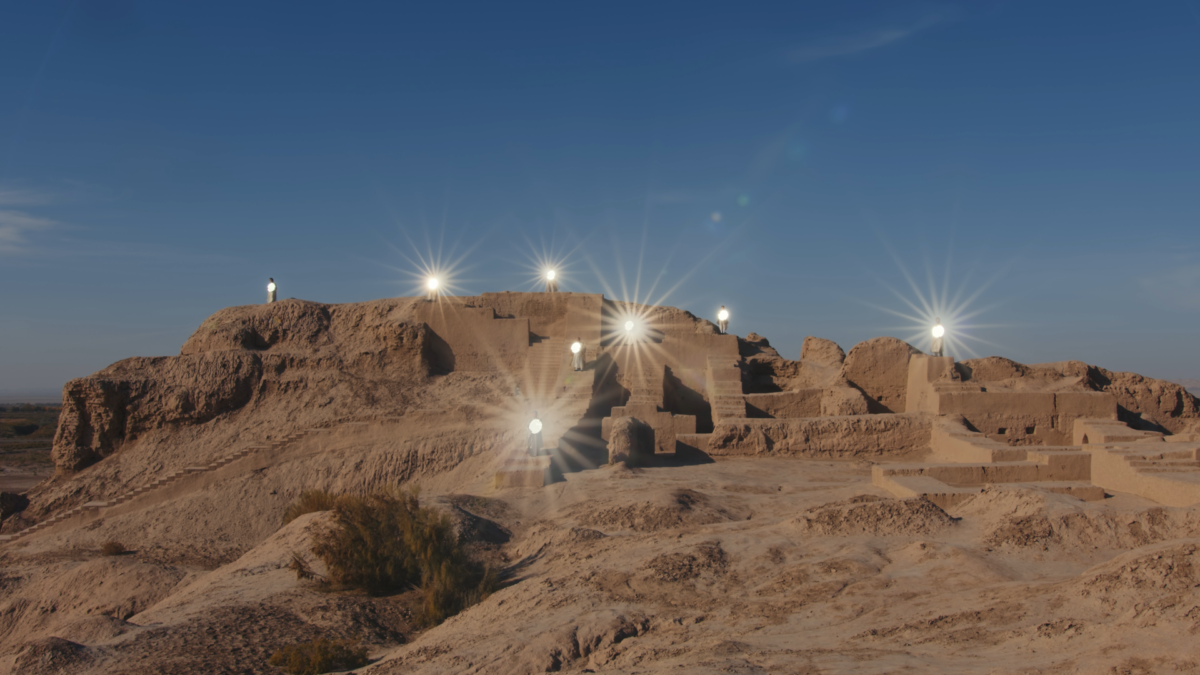The work is inspired to the ambiguous figure of Al-Muqannaʿ (“The Veiled One”), a dyer who became a spiritual and political agitator in eighth-century southern Central Asia, while it speculates about the cultural and political echoes of his revolutionary ideas. Al-Muqannaʿ preached an ideological syncretism of Zoroastrianism, Mazdakism and Buddhism, and awakened the minds of his “White-Clothed” disciples by shedding light on the status quo of his time, challenging practices of land exploitation, authoritarian centralized power, religious repression. His legacy, which might be seen today as “proto socialist,” was appropriated by the regional Soviet propaganda machine as a nativist heroic example of how to rise up and fight for the communal sharing of property and wealth. Embracing a cyclical understanding of history and knowledge where meanings are unstable and constantly remade, the artist re-imagined Al-Muqannaʿ’s preachings and invited the influential Uzbek poet Jontemir Jondor to embody a modern version of the charismatic leader. The film takes us to the banks of the Amu Darya river, the round burial ground of Chillpiq, and the city of Bukhara, all of which were said to have been touched by Al-Muqannaʿ’s legendary deeds, such as summoning a second moon from a well. But also to the charred door found in the Zoroastrian fortress of Kafir-Kala that depicts the water goddess Nana being worshipped around an altar of fire, and to Soviet infrastructures such as the Kirov Reservoir and the solar furnace of Uzbekistan. This visual time travel looks at Al-Muqannaʿ’s mastering of illusion and science for demagogical purposes and reflects on the central role that technology and the manipulation of the Earth have played in sustaining power structures since ancient times. Together, the lyrical sequences, complete with reflections and glinting light, and the textural, non-diegetic soundtrack, metaphorically address the twofold aspect of the history of Al-Muqannaʿ—who eventually fell into the darkness which he opposed, turning his ideal citadel into ashes—while continuing to make his powerful and still-unanswered questions reverberate in our own time.



